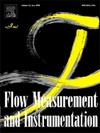Evaluation of measurement uncertainty for handheld differential pressure anemometer
IF 2.3
3区 工程技术
Q2 ENGINEERING, MECHANICAL
引用次数: 0
Abstract
This study aims to evaluate the uncertainty of calibration results of the handheld differential pressure anemometer (HDPA) to guarantee its measurement accuracy and reliability. In this study, an HDPA was calibrated to acquire experimental data, and GUM (Guide to the Expression of Uncertainty in Measurement) and MCM (Monte Carlo Method, including single-run MCM and adaptive MCM(AMCM)) were employed to evaluate its uncertainty. The high accuracy of MCM was utilized as a benchmark to verify the applicability of the GUM method in this domain. Comparative analysis results indicated that the GUM method failed to meet the requirements in certain situations, particularly when pursuing high accuracy in the scene. The MCM method demonstrated more prominent advantages. Additionally, the evaluation results of single-run MCM and AMCM were highly consistent, but AMCM was significantly superior to the former in terms of evaluation efficiency. This study not only confirmed the applicability of GUM and MCM in the evaluation of calibration uncertainty of HDPA but, more importantly, revealed the limitations of the GUM method for the first time and highlighted the unique advantages of AMCM in improving evaluation efficiency and accuracy. Therefore, new insights and practical suggestions are provided for the field of high-precision measurement of HDPA; namely, the more efficient AMCM method should be given priority in uncertainty evaluation.
手持式差压风速计测量不确定度评定
本研究旨在评估手持式差压风速计(HDPA)校准结果的不确定度,以保证其测量精度和可靠性。在本研究中,对HDPA进行校准以获取实验数据,并使用GUM (Guide to Expression of Uncertainty In Measurement)和MCM(Monte Carlo Method,包括单次运行MCM和自适应MCM(AMCM))来评估其不确定度。以MCM的高精度为基准,验证了GUM方法在该领域的适用性。对比分析结果表明,在某些情况下,特别是在场景中追求高精度时,GUM方法不能满足要求。MCM方法的优势更为突出。单次运行MCM与AMCM的评价结果高度一致,但AMCM在评价效率上明显优于前者。本研究不仅证实了GUM和MCM方法在HDPA校准不确定度评定中的适用性,更重要的是首次揭示了GUM方法的局限性,突出了AMCM方法在提高评定效率和准确度方面的独特优势。为HDPA高精度测量领域提供了新的见解和实用建议;即在不确定度评价中应优先考虑效率更高的AMCM方法。
本文章由计算机程序翻译,如有差异,请以英文原文为准。
求助全文
约1分钟内获得全文
求助全文
来源期刊

Flow Measurement and Instrumentation
工程技术-工程:机械
CiteScore
4.30
自引率
13.60%
发文量
123
审稿时长
6 months
期刊介绍:
Flow Measurement and Instrumentation is dedicated to disseminating the latest research results on all aspects of flow measurement, in both closed conduits and open channels. The design of flow measurement systems involves a wide variety of multidisciplinary activities including modelling the flow sensor, the fluid flow and the sensor/fluid interactions through the use of computation techniques; the development of advanced transducer systems and their associated signal processing and the laboratory and field assessment of the overall system under ideal and disturbed conditions.
FMI is the essential forum for critical information exchange, and contributions are particularly encouraged in the following areas of interest:
Modelling: the application of mathematical and computational modelling to the interaction of fluid dynamics with flowmeters, including flowmeter behaviour, improved flowmeter design and installation problems. Application of CAD/CAE techniques to flowmeter modelling are eligible.
Design and development: the detailed design of the flowmeter head and/or signal processing aspects of novel flowmeters. Emphasis is given to papers identifying new sensor configurations, multisensor flow measurement systems, non-intrusive flow metering techniques and the application of microelectronic techniques in smart or intelligent systems.
Calibration techniques: including descriptions of new or existing calibration facilities and techniques, calibration data from different flowmeter types, and calibration intercomparison data from different laboratories.
Installation effect data: dealing with the effects of non-ideal flow conditions on flowmeters. Papers combining a theoretical understanding of flowmeter behaviour with experimental work are particularly welcome.
 求助内容:
求助内容: 应助结果提醒方式:
应助结果提醒方式:


